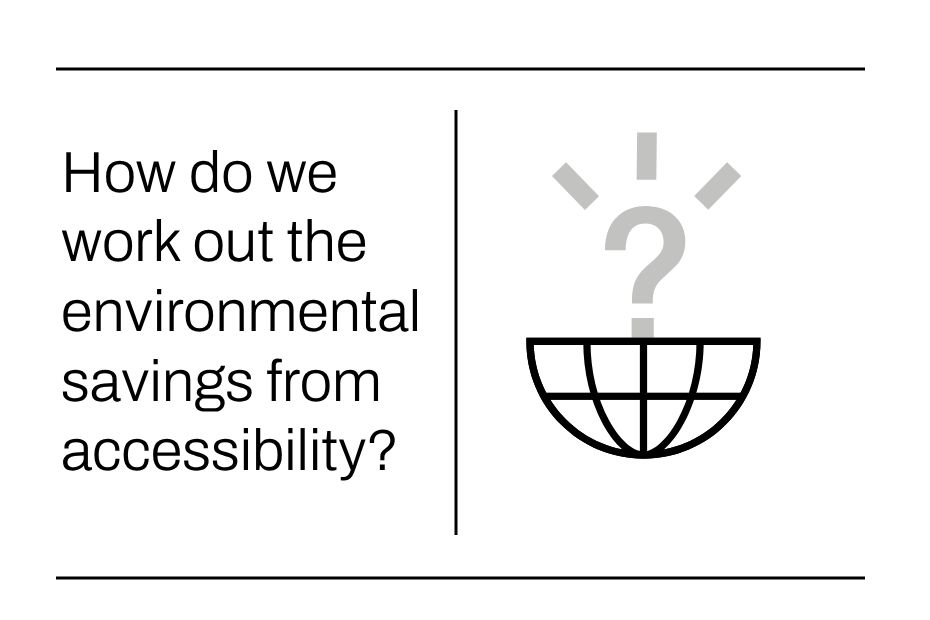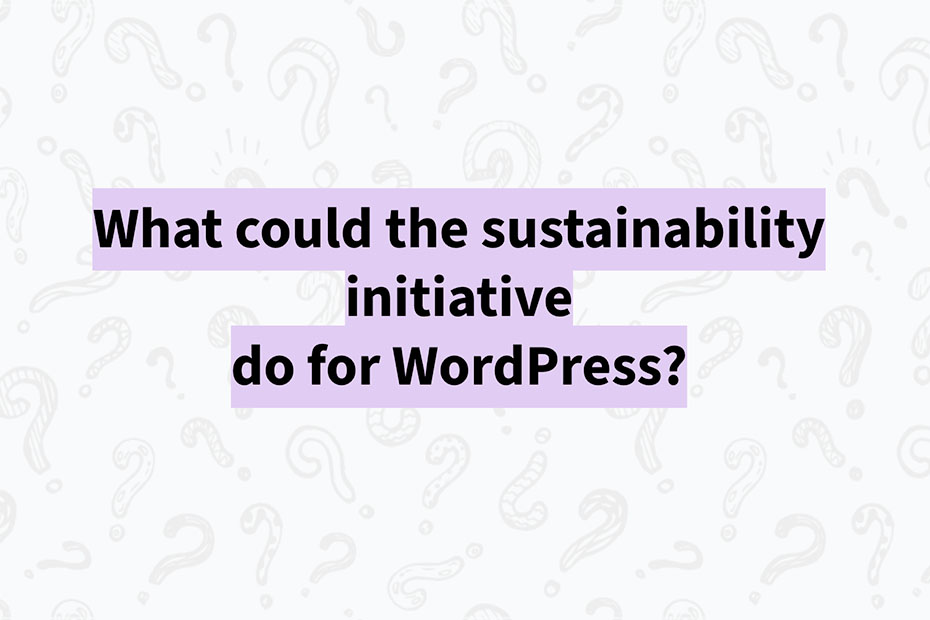Because we’ve been talking about sustainability and the internet for while, every so often, we get people asking us about the environmental impact of streaming services like Netflix and so on. Sometimes, these end up as interviews, and this week I ended up being interviewed on a podcast show run by a well known national newspaper in the UK, The Daily Mail. There isn’t much time to talk on radio shows, so in this post, I’ve expanded on the key points I wanted to get across.
The short version
Yes, there is an environmental cost to streaming videos over services like Netflix, because a lot of the electricity that powers the internet comes from fossil fuels. This can and should change. However the majority of the environmental impact comes from both the production (i.e. filming and so on) of the content, and the production of the devices you might view it on.
Especially in the middle of a pandemic, you needn’t to feel guilty about the carbon footprint of streaming videos, especially compared to other activities we do every day.
However, if you want some constructive steps to follow, I’ve outlined a few in this post, and the reasoning behind them. They start fairly tactical, then end up much wider and systemic. If you’re interested in hearing the podcast interview you can find it at this link to the Mail Plus podcast by Andrew Pierce, at the 16:18 mark (warning, this post will likely be far more coherent…).
The fuller version
These are written for someone who does not build digital services, and isn’t a techie, but has heard a few news stories about the carbon footprint of their Netflix habit, and wondering what to do. If there’s interest in going further down the rabbit hole, we can in future posts. Off we go…
Learn to take a lifecycle view of any activity
When we talk about the environmental impact of any activity, from watching a film over the internet, or even making an device to watch it on, it’s helpful to know that there will be ‘hotspots’ where a greater share of the emissions will take place compared to others. As long as most of our energy comes from fossil fuels, where you see lots of energy being used, there will often be lots of carbon emissions. If you were to sketch a chart over environmental impact of watching a film on an iPad, it might look a bit like this sketch:
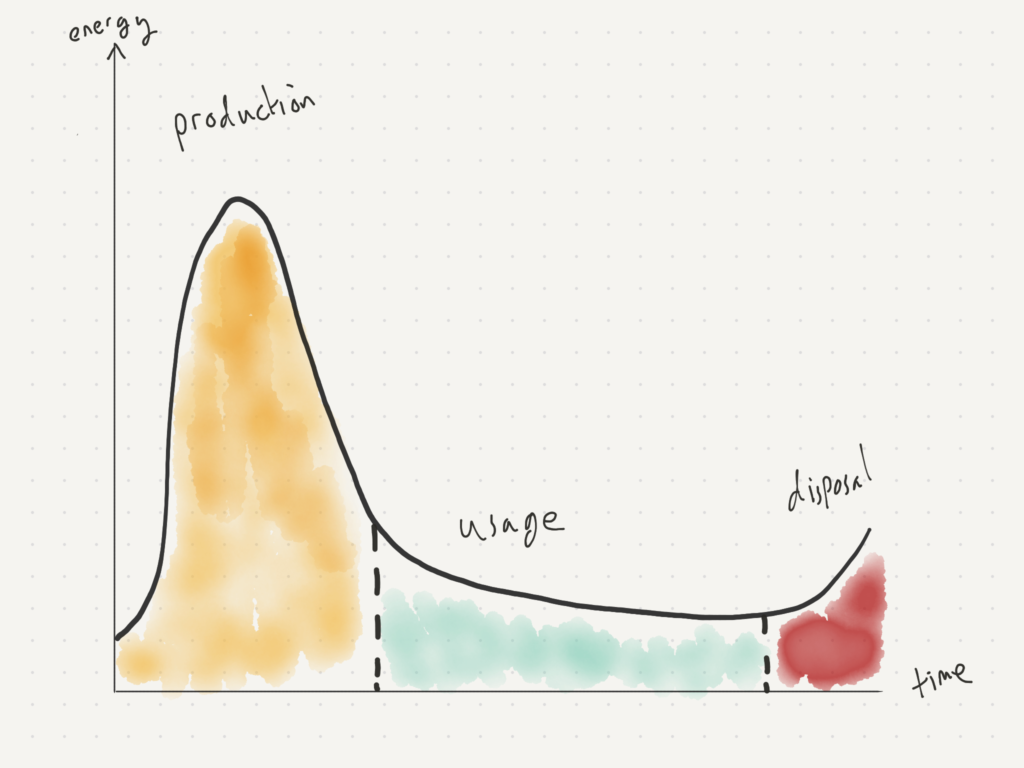
Making an iPad, versus using an iPad
As an example, making consumer electronics like mobile phones or tablets is extremely energy intensive, but these days, they’re pretty energy efficient to use, and tend not to need very much energy to run. It often takes energy to break up electronics and reclaim the useful minerals again.
So sure, while there would be some savings in energy from not watching a film on an iPad, by the time you’ve bought the tablet, most of the energy has already been used in making the device for you. If you want to learn more, the Restart project is a great place to start.
In the middle of a pandemic, it’s likely a pretty good deal to get the enjoyment that you do from watching a show you love for an hour, for the cost of not very much energy, if you already have a the device.
Making a film, versus watching a film
You can also see this pattern if we zoom out further, to look at the lifecycle of making the show that we want to watch, compared to the actual watching of the film.
This is backed up by look at Netflix’s own recent environmental report for 2020 – around half of their own carbon footprint comes from the actual production of the shows, compared to around 5% for the running of the infrastructure to serve them over the internet.
But just like the iPad example, worrying about the streaming part is worrying about the least energy intensive part of the entire process. This is the case even if when in isolation it looks like a large number to you.
This is why it’s important to think about the lifecycle view – just because one part is a part you are able to control directly and quickly, it doesn’t mean that it’s an effective place to concentrate your efforts. If you want to learn more, the carbon brief offers way more detail on this subject.
It’s worth knowing that reducing the emissions from production is something the industry is working on. Look up Albert, to find out more about reducing the emissions of making films, and DIMPACT for understanding the emissions from streaming in more detail.
Why holding onto your kit for longer helps
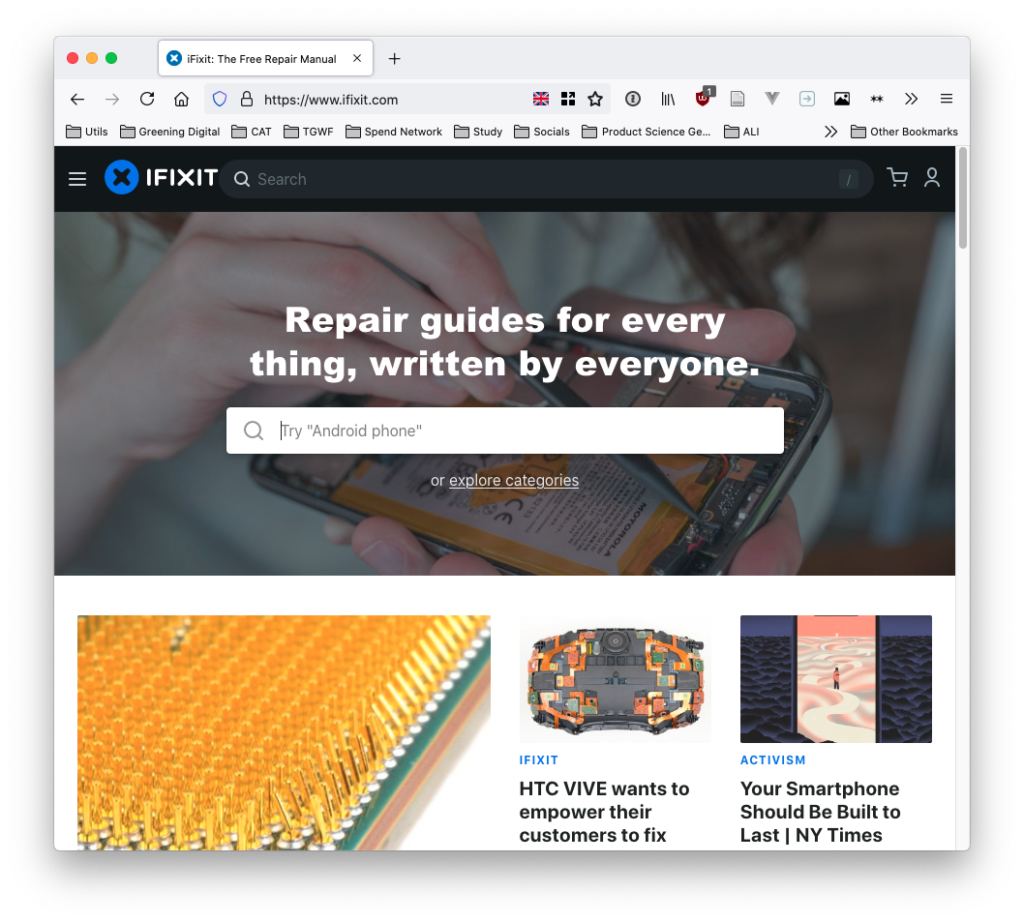
Once you have a life cycle view of any activity, and you know where the whole impact is, then you’re able to think more laterally about what options you have to make the act of watching films online greener.
If we knew that most of the environmental impact came from the making of the devices we use, then it would make sense to do what we can to reduce the need to do all that expensive manufacturing of them in the first place.
For most of us, this translates into doing what we can to extend the useful life of existing devices. Or if we need a new device, buying one that’s already had one useful life.
This is getting easier – in addition to the usual market places like eBay, Gumtree, Shpock and so on, there are sites like Backmarket that specialise in pre-owned kit now. Also many larger companies sell refurbished equipment too.
If you are looking at extending the life of electronics you already have, start at iFixit.
Think about who you are buying from
Some companies are doing better than others, when it comes to being transparent and responsible. But even inside the companies that are lagging behind, there are often people working hard to make the case to be more active on the climate impact of what they do.
Who are you buy streaming services from?
While it’s increasingly difficult to do so given their sheer size, if you’re user of a streaming service, doing some research, and asking them about their policies helps demonstrate that there are people paying attention.
Taking this further, switching away from a service, and being clear why you switched helps people inside argue for change. This information is surprisingly hard to find, but Greenpeace’s clicking clean reports are a decent way into the subject.
Who are you buying energy and internet access from?
Closer to home, if you know that streaming shows uses electricity, then one way to make streaming greener is to make sure that as much green energy is being used in the process.
Buying green energy for your home is fairly obvious next step, but an increasing number of internet service providers you buy your connection from are also making public commitments to power their networks with green energy. Vodafone is one such example in Europe, but there are others too.
If you want measurable impact without changing anything else at all, learn to change when you watch
While it it isn’t usually exposed to us directly, the carbon footprint of electricity on most national grids is constantly changing. This is because at different times of day, we generate electricity from different sources.
How changing the time of use can help
When the sun is high in the sky, a greater share of power will come from solar panels, so streaming a show when there’s so much abundant green energy on the grid will often mean that doing so is slightly greener.
Conversely, in the evening right after people come home from work, it’s the other way around. Even if there’s plenty of wind blowing, there’s so much demand for energy that a lot of the time fossil gas generators will come online to keep up with demand. This means that the energy on the grid will be slighty dirtier.
Matching use to supply
This might be a bit hard to visualise, but the idea of matching the use of energy to when the grid is green is increasingly common.
Google now coordinate the workloads in their datacentres to take advantage of these changes. It’s greener, but is also saves them a shed load of money. On a more domestic level, the baking forecast applies the same ideas matching when to use energy baking if you have an electric oven, for the greenest possible delicious baked goods.
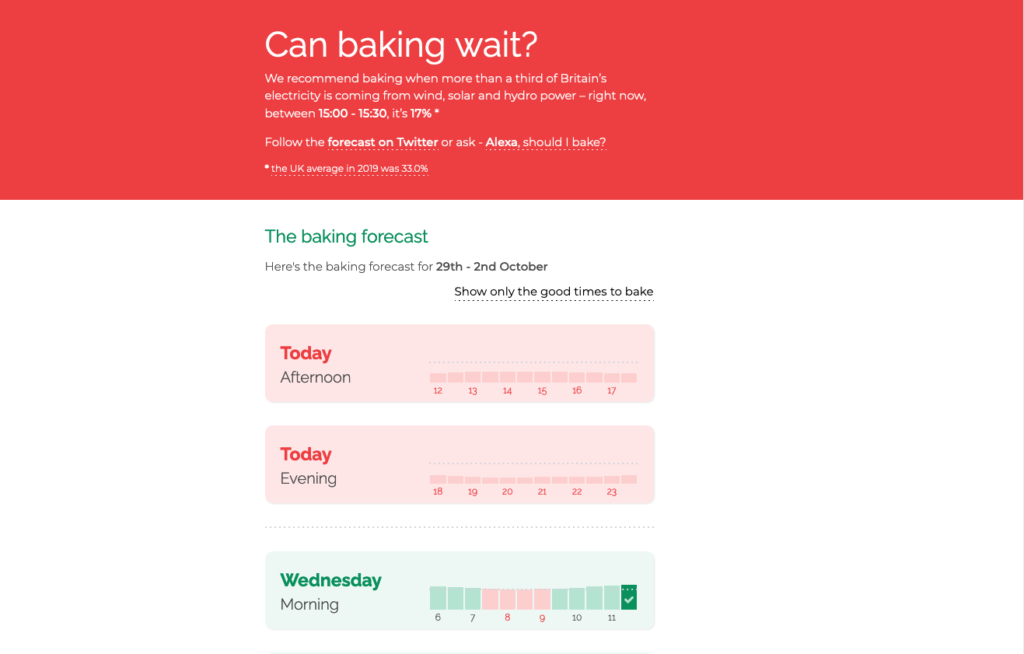
Back to the world of streaming, our very own Lu Ye, the designer on the green web browser extension explored this in detail for her masters thesis, and her onlign OS project. You can read more in her piece in Branch magazine about designing for carbon aware digital experiences.
Act like part of society, not just a consumer
Finally, it’s really important to remember that some problems aren’t ones you can solve through individual actions alone, and need a more systemic approach. You often need this to create a more level playing field for those working hard to offer greener ways to use digital services.
Why we need to change the rules, not just our behaviour
You currently pay a premium for easy to repair devices like the Fairphone over a handset with similar size screen and camera. Try comparing the price of a Fairphone for example with the specs of most phones on a phone comparison site, and you’ll see what I mean.
And even though renewable energy like solar is now the cheapest form of new energy generation to install in the world, green energy is often marketed as a more expensive option than the regular grey/brown default forms of generation.
In both of these cases, this is because in the default scenario, like using regular energy or a non-fair electronics, the full costs are being shifted from the polluter onto other people instead.
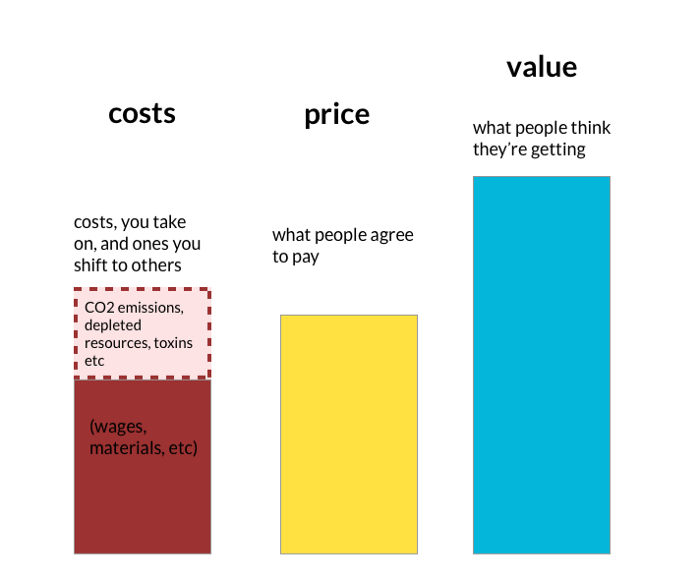
This makes the destructive default look like the better option to go for in the short term, largely because we can’t see who is paying the full costs (spoiler: it’s almost always us in the long term).
It’s very difficult to see meaningful change happen without us changing the way we share the costs that come with using digital services – this means engaging as a citizen as well as a consumer.
Why we can’t change the rules without changing our behaviour
When systemic change is mentioned in the context of climate, it’s often used as a way to avoid talking about the need to move on from all the destructive defaults that make up society.
However It’s often more helpful to think of systemic change and individual action as two sides of the same coin: visible actions we take as individuals can create the norms that make it possible for policy makers to make laws that support wider adoption of climate friendly behaviour.
This makes it easier to take more actions as individuals which can help change norms, which then make further policy action, and so on.
There are a load of organisations you might look up, but personally I’m a fan of 350.org if you are outside of the UK, and if you’re in the UK, climate charity Possible, and the work that mysociety is doing to make it easier to be an active citizen on climate issues, with their work on the climate assemblies, and their work to make all the climate plans from the local governments in the UK easily findable and searchable.
Summary – yes it’s ok to watch Netflix in a pandemic, but please also engage on other levels.
Hopefully this has shed some light on a very misunderstood subject.
For more, you can follow our account on twitter, @greenwebfound, subscribe to our RSS webfeed, or sign up to Greening Digital, our free monthly newsletter.
Finally, if you build digital services and want to help understand and manage their environmental impact, this may be something we can help you with – see our services page, or drop us a line to ask us a question.

